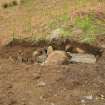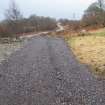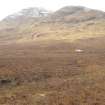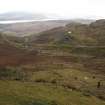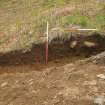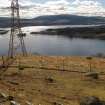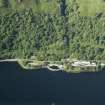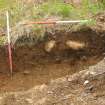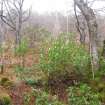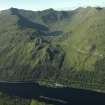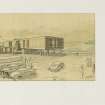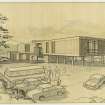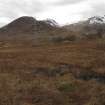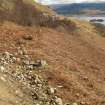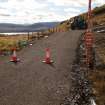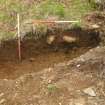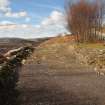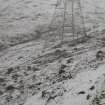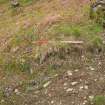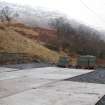Cruachan Power Station
Hydroelectric Power Station (20th Century)
Site Name Cruachan Power Station
Classification Hydroelectric Power Station (20th Century)
Alternative Name(s) Cruachan Pumped Storage Scheme; Ben Cruachan Hydroelectric Power Scheme
Canmore ID 164447
Site Number NN02NE 12
NGR NN 08000 27750
NGR Description Centred NN 08000 27750
Datum OSGB36 - NGR
Permalink http://canmore.org.uk/site/164447
- Council Argyll And Bute
- Parish Ardchattan And Muckairn (Argyll And Bute)
- Former Region Strathclyde
- Former District Argyll And Bute
- Former County Argyll
NN02NE 12.00 centred 08000 27750
NN02NE 12.01 centred NN 0810 2870 reservoir
NN02NE 12.02 NN 08015 28154 dam
NN02NE 12.03 NN 0780 2853 (tunnel) outlet
NN02NE 12.04 NN c. 0800 2775 turbine hall
NN02NE 12.05 NN 0792 2676 visitor centre and tunnel entrance
NN02NE 12.06 NN 0828 2825 tunnel entrance
Cruachan Power Station [NAT] (at NN 0773 2675)
OS 1:10,000 map, 1974.
Awe/Ben Cruachan scheme (1965). Pumped storage system: dam on Ben Cruachan and underground power station (Edmund Nuttall and Co). Installed capacity 400 mW.
J Miller 2002.
Photographic Record (1960 - 1969)
Photos taken in the 1960s by Andrew Simpson, scanned and contributed to RCAHMS.
Three sites:
CRUACHAN PUMP STORAGE DAM
Four Photographs.
Scanned from Mono-chrome negatives.
FORTH ROAD BRIDGE
Six Photographs.
Scanned from Mono-Chrome negatives.
RIVER CLYDE
Two Photographs
Scanned from 35mm Kodachrome.
(A) Construction of QE2
400mm Telephotograph from Great Western Rd.
(B) General Terminus Quay
Ore Carrier, Bulk Handling Cranes and Ferry at General Terminus Quay, Glasgow
Field Visit (2010)
Cruachan Power Station is a pioneering example of pumped storage and the first to be built on this scale in the UK. Water is received via pressure pipeline from Cruachan Dam (directly above the turbine hall) which is used to generate power. At periods of cheap electricity the turbines are run in reverse to pump water back from Loch Awe to the reservoir. Ben Cruachan Turbine hall forms and A-group with Ben Cruachan Dam. Ben Cruachan turbine hall is a monumental engineering achievement and an integral part of one Britain’s most innovative hydro electric power schemes and the first example of the use of reversible turbine pumped storage technology. The 3240 cubic metre turbine hall was hollowed out entirely from solid bedrock and is set deep within the side of the Ben Cruachan ridge. The turbine hall is accessed by a 1 kilometre long vehicular access tunnel. The lower end of the tunnel terminates in ‘the crossroads’ where secondary tunnels give access to visitors viewing gallery, transformer hall and surge shaft. The housing of a power station of this scale wholly underground in addition to secondary features such as transformers and pressure tunnels was pioneering and allowed for the development of a power station large enough to play a nationally significant role in energy supply in an area renowned for scenic beauty with very limited visual impact. The station exhibits a number of period design features dating from the 1960s including the timber artwork panel by Elizabeth Faulkner and careful attention to detail in lighting and acoustic design, all with imaginative uses of timber and concrete. National Archives of Scotland (NAS), Ref: NSE North of Scotland Hydro Electric Board Collection (1943 -1990); NAS, Ref: NSE1 North of Scotland Hydro Electric Board Minutes (1943-1990); NAS, Ref NSE2 North of Scotland Hydro Electric Board Annual Reports (1943-1990); PL Payne; E Wood, 2002, 178-79; J Miller, 2002, 230-40; F A Walker,2000, 375.
Desk Based Assessment (October 2013 - July 2015)
CFA Archaeology Ltd undertook an assessment of the cultural heritage implications of the proposed route of a replacement overhead line (YX Route) from Ben Cruachan Hydro Power Station to Dalmally substation.
Although twelve cultural heritage features were identified, by the desk-based assessment, within the study area, few of the identified cultural heritage sites lie on the route of the line, or in the immediate vicinity of any of the towers.
Taking into account the construction methodology to be employed, and the avoidance and mitigation measures which will be employed, it is considered that the overhead line replacement project will have no significant residual adverse effect on the known cultural heritage resource and will have little potential to disturb significant hitherto undiscovered archaeological deposits.
Funder: Iberdrola Engineering and Construction Ltd
CFA archaeology Ltd
Excavation (March 2015 - June 2015)
NN 0800 2773 - NN 1422 2939: Two phases of archaeological mitigation work were carried out by CFA Archaeology Ltd along the route of an overhead power line from Ben Cruachan Hydro Power Station (NGR: NN 0800 2773) to Dalmally substation (NGR: NN 1422 2939) in advance of line replacement works.
Walkover survey along the edges of previously constructed access tracks discovered a bank, Site 12, which had been bisected and truncated by the access track to YX07. A section of the bank was excavated and recorded and deemed to be a post-medieval field boundary.
Also discovered during walkover survey were two possible cairns, site 13 in the vicinity of Tower YX08, and site 14 further down towards the valley floor and near the Dalmally Substation. Both were overgrown and fairly small at 3m maximum diameter, and both are suggestive of field clearance activity. Sites 13 and 14 were demarcated to ensure protection and visibility during forthcoming works on the YX line project.
Funder: Iberdrola Engineering and Construction
CFA Archaeology Ltd - Ewan Mac Neilage (July 2015)
Note (25 October 2023)
Loch Awe Scheme was built between 1959 and 1967 and comprised three power stations Inverawe, Nant and Cruachan, the latter two being underground. Inverawe is supplied by a tunnel from Loch Awe and discharges into Loch Etive, whereas Nant is fed from Loch Nant by a tunnel supplemented by an aqueduct collecting from local streams and discharges into Loch Awe. These stations have installed capacity of 25MW and 15MW respectively.
By far the largest Power station in the scheme is Cruachan at 400MW and is a pumped storage system, making use of Cruachan Reservoir at an altitude of 1316 feet to give a head of 1198 feet. During off-peak periods at night and at week-ends, water is pumped up to the reservoir from Loch Awe using available excess power. The water is used to generate during daytime demand, discharging into Loch Awe.
The project involved the design and development of special turbines that could be utilized as pumps against a high head of water, and alternators that could be driven as motors. A buttress dam was built at the exit end of Cruachan Reservoir, and several tunnels to collect water from the surrounding area. Problems at the lower level were largely caused by congestion at the Pass of Brander, leading to the decision to build the power station in the heart of Ben Cruachan. This involved an enormous amount of excavation , made difficult by geological problems. Later on problems arose due to the necessity to assemble large machinery in confined space under controlled conditions. Also difficulties were encountered with the outfall into Loch Awe. However, in spite of the difficulties the project was successfully completed to specification in 1967.
Information from NRHE catalogue item number WP007424 compiled by George Walker in 2005.
Field Walking
NN 0800 2773 - NN 1422 2939: A targeted walkover survey was carried out by CFA Archaeology Ltd along the route of an overhead power line from Ben Cruachan Hydro Power Station to Dalmally substation in advance of line replacement works.
Walkover survey around proposed Equipotential Zones and ATV access routes found an extensive area of rig-and-furrow, as well as a large drystone enclosure. Survey also visited two previously known sites in the vicinity of proposed Balfour Beatty operations on site. Site 3, an area of rig-and-furrow near Tower YX10, and site 5 near Tower YX12 consisting of a field bank, rig-and-furrow and a possibly related tumbled rectangular stone-wall structure. Sites in close proximity to the works were demarcated. No further mitigation was required.
Funder: Balfour Beatty Utility Solutions Ltd
CFA Archaeology Ltd - Ewan MacNeilage









































